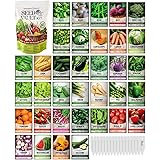DUMOS Raised Garden Bed with Legs, 48x24x30in Wood Elevated Planter Box w/Bed Liner for Herbs Flowers Vegetables, 300lbs Capacity Outdoor Gardening Planters for Patio Balcony Backyard, Natural Wood
$79.99 (as of 14:28 GMT -05:00 - More infoProduct prices and availability are accurate as of the date/time indicated and are subject to change. Any price and availability information displayed on [relevant Amazon Site(s), as applicable] at the time of purchase will apply to the purchase of this product.)Land Guard Galvanized Raised Garden Bed Kit, Galvanized Planter Garden Boxes Outdoor, Oval Large Metal for Vegetables…………
35% OffGardeners understand the importance of compost in building a rich soil. A great place to begin building compost is in your kitchen. Here are some great tips on home composting – and specifically how to create your own garden soil using your kitchen leftovers.
Your kitchen is a good source of materials for composting. Things like certain leftover foods and plant debris contain important nutrients that can help your garden plants grow healthy and strong. To begin creating your own garden soil using your kitchen leftovers, you should find yourself a good storage bin and a proven formula for mixing compost.
It is certainly possible to compost your leftovers on the ground but doing so can be a bit messy and leave a pretty strong odor. Obviously, leftover foods can emit an awful smell if they are left out for a few days. So, save yourself a stench and use a sealed composting bin.
Also, leaving any leftover food out in the open will attract rodents and other creatures (and insects) that will find your scraps to be a fine feast. So, if you don’t want varmints running around your backyard you better find a way to keep your compost materials covered.
HINT: You do not need an expensive bin to start composting your kitchen leftovers and other waste products. You can easily find an inexpensive and reliable bin with a snug cover that will get you started.
Once you have a reliable recycle bin, start filling your bin with your kitchen waste. To create good garden soil you need to put a variety of composting materials into your recycling bin. According to experts, the materials you put inside your composting bin will determine the type of garden soil that you will get so be mindful of what you put into your bin.
For your home composting project make sure that you include plenty of green items like: left over tea leaves, coffee grounds, leftover fruits and vegetables. Plant-based remains are good sources of nitrogen in your compost, so you will certainly want to include those.
Aside from putting green items into your recycling bin, you should also put in brown items including: cardboard and cardboard tubes from foil wraps, old flowers, sawdust, leaves, dead plants, stale bread, and leftover cereals. You can even add used egg shells, paper towels and paper bags into your compost. However, you will not want to add too much of this into your composting bin. Paper bags, paper towels and eggshells take some time to decompose so they will not likely decompose as fast as the rest of the stuff inside the big.
Do not put any meats or any type of animal flesh in your compost bin.
After filling up your home composting bin, seal the bin carefully to keep rodents, insects, and other creatures out.
Your kitchen waste will decompose faster if you turn it over every two weeks. For hygiene reasons, wear a mask and gloves when you turn the pile especially during the first few weeks. Note that some types of kitchen leftovers rot slowly and they tend to emit foul smell while rotting so make sure that you cover your nose and mouth when you turn the pile. Remember that you are dealing with smelly garbage here so protect yourself from the stink.
Related Content
- Southeast Minnesota program will rescue the food from farms otherwise left behind
- How to get rid of your Christmas tree in Philadelphia (the right way) – Axios
- Discarding pumpkins into natural areas a big no-no: NCC | Lethbridge News Now
- USDA Community Compost Grants Benefit Food Matters Cities | NRDC
- Superior leaders take fact-finding tour of WLSSD composting facility – Yahoo News











































